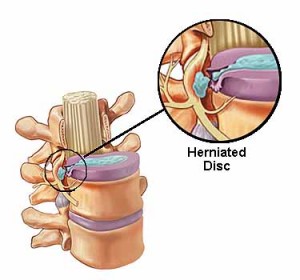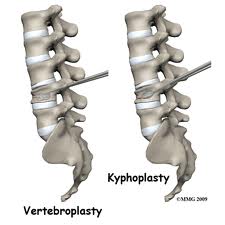In the Dec.31, 2002 edition of the Medical Post a report of the recent North American Spine Society’s annual meeting in Montreal was entitled: “Aggressive approach to slipped discs needed”. A ground breaking study from England was presented that will change the attitude of many physicians about “slipped discs”.
Discs in the lower back do not really “slip”. The disc can bulge, protrude or herniate. In the center of the disc is a more liquid part (nucleus pulposus), which can leak out when the fibrotic shell of the disc tears.
This occurs commonly with aging and also with obesity. Dr. Keith Greenfield from the University of Bristol presented data together with the Walton Neurosurgery Centre in Liverpool showing that the borderline cases (“bulging discs”)that previously were treated without surgery do much better when early surgery is done (discectomy). This is a shift for many European countries and Commonwealth countries including Canada. In the US back surgeons always had a higher surgical rate as MRI scans have been used much earlier as the standard and the hidden minor disc protrusions and bulging discs are visualized earlier. Dr. Greenfield’s study involves 88 patients who belong into the group of patients who are borderline cases between those who definitely need surgery because of a sciatic nerve compression and those who do not need surgery (normal MRI scan). Clinically the “slipped disc” group (with disc bulges) has moderate back pain and some pain that radiates into the leg.
They have moderate disabilities with problems of walking, sitting, travelling and standing. The investigators treated half of the patients with microdiscectomy and the other half with conservative treatment (physiotherapy etc.). One year after the surgery a large percentage of them had returned to work and are feeling fine. The control group is quite the opposite: a large percentage of them has slipped into total disability that makes it impossible for them to return to work. Many have entered into chronic pain syndromes that might keep them disabled for a long time. The study is ongoing and the group will report about the two year follow-up point in Vancouver/B.C./Canada in May 2003 at a conference of the International Society for the Study of the Lumbar Spine. For now it seems that microdiscectomy is the treatment of choice in the bordrline cases of disc bulges and mild disc protrusions.
Comments: The rate of back surgery in the US has been 10 times that in England. Perhaps it is time that back surgery is being standardized and MRI scans are done routinely in every more significant back case to find out what’s going on earlier in the course of back pain. The direction medicine is going is that back pain that persists for more than 1 month likely should be MRI scanned. In case of a positive finding (bulge, protrusion or disc herniation), this study suggests that doing a microdiscectomy would be the new standard of therapy. Early mobilisation is the other key, which sports medicine physicians have been aware of and used for the last decade. If it’s good for athletes, it is likely good for the public at large.
Other link: Low back pain.
Last edited December 10, 2012







